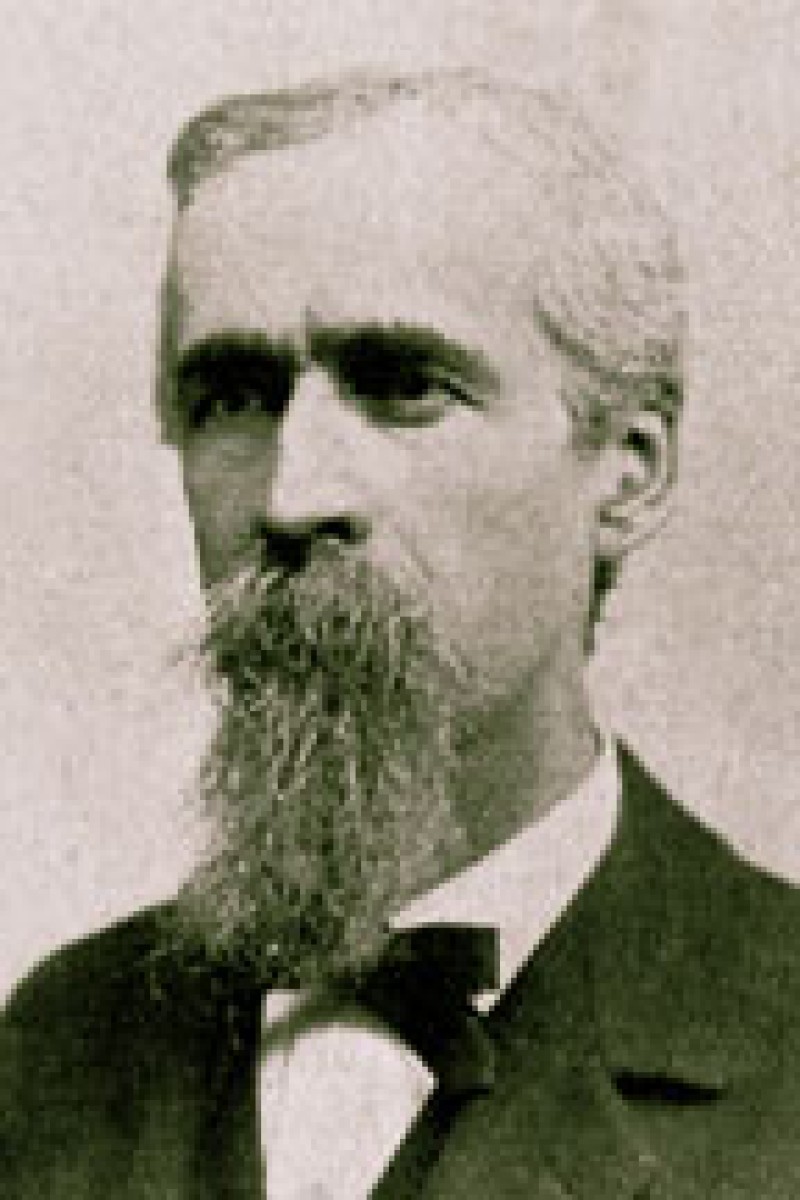Thaddeus Armstrong Minshall
Events in Thaddeus Armstrong Minshall’s early life, like those of his predecessor on the Supreme Court of Ohio, Justice William White, forced him to overcome the tragedy caused by the death of a parent and the hardship of child labor. Minshall, like Justice White, persevered and forged a successful judicial and legal career.
Minshall was born in Ross County, Ohio on Jan. 19, 1834, to William Gilmore and Eliza Jones Minshall. Following his mother’s death in 1841, Minshall boarded with the Jonathan Sherman family in Greene Township; worked in a woolen mill to pay his way; and when time allowed, pursued his education in rural Colerain and Greene township schools. Biographers and memorialists, who recounted the events of Minshall’s life, commented that he studied late into the night by tallow candlelight to further his education when he was unable to attend school. When his financial resources improved, Minshall enrolled at the Mt. Pleasant Academy in Kingston to better his education, and at age 20, began a career as a teacher in the county’s local schools. Subsequently, he came to the attention of Chillicothe attorney Samuel Logan Wallace who encouraged Minshall to read law in his offices.
Early in 1861, Minshall was admitted to the Ohio bar and opened a law office in Chillicothe, but soon after heeded President Abraham Lincoln’s call for troops to fight in the Civil War. Minshall enlisted as a private in Company C of the 22nd Ohio Volunteer Infantry for three months service and quickly rose through the ranks to become sergeant-major in his company. Following his discharge, Minshall returned to Ross County and set about the task of raising a company of men for three years of Civil War military service. His successful efforts were rewarded as Minshall was named captain of Company H of the 33rd Ohio Volunteer Infantry. Capt. Minshall remained in command of his company until his discharge on Oct. 14, 1864.
Soon after his return home in 1864, Minshall successfully campaigned on the Republican Party ticket for election to Ross County prosecuting attorney. Minshall refused to seek re-election, deciding to return to private practice. In 1876, voters of Ross, Highland and Fayette counties elected Minshall judge of the Court of Common Pleas of the Second Subdivision of the Fifth Judicial District to fill a vacancy. Voters elected Minshall to a full five-year term on the common pleas court in 1878 and to a second five-year term in 1883. While on the bench, biographers and memorialists noted that Minshall would become impatient with attorneys, who in Minshall’s opinion, presented cases where their arguments failed to be grounded in logic.
Ohio voters elected Minshall to the Supreme Court in October 1885. Minshall was re-elected twice, first in 1890, then again in 1896. The length of Minshall’s terms on the Court increased by one year following the Ohio General Assembly adoption of legislation in 1892, that added a sixth member to the Supreme Court and increased a Justice’s term to six years. During the years 1889, 1890, 1895 and 1901, Minshall served as Chief Justice.
In 1902, Minshall, in hope of regaining his health, opted not to seek a fourth term on the court, choosing instead to return to private practice in Chillicothe. Minshall’s published opinions are in Volumes 44 through 65 of Ohio State Reports, and are brief and include limited numbers of citations.
After the Justice’s death, writers of biographical notes or memorials of Minshall’s life and career commented that his opinions showed he gave greater weight to good reasons than to precedents. The writers also noted that Minshall’s decisions seemed to reflect the opinion of noted English jurist William Murray, 1st Earl of Mansfield, who wrote that “the idea of the law does not consist of particular cases, but of general principles which are illustrated and explained by the cases.”
The case of Ward et al. v. Ward (1900) illustrates Minshall’s opinions. The Justice briefly outlines that a man who enters into a contract to be married may not enter into agreements to leave portions of his estate to children from a previous marriage without the consent of the contemplated wife. To do so would defraud her of marital rights and deprive her of what she would be entitled to upon his death. Minshall grounded his reasoning by citing cases decided in Delaware, Iowa, Michigan, Missouri and Vermont; and citing David Stewart’s 1887 book, The Law of Marriage and Divorce, as well as Charles Fisk Beach’s 1896 “A Treatise on the Law of Contracts.
Minshall’s health did not improve after his return to Chillicothe, forcing him to abandon his law practice. After being ill for much of 1908, Minshall died in his Chillicothe home on Nov. 22, 1908. Minshall married Julia Ewing Pearson on April 9, 1873. He and his family are all buried in Grandview Cemetery in Chillicothe.

b. Jan. 19, 1834
d. Nov. 22, 1908
64th Justice of the Supreme Court of Ohio
